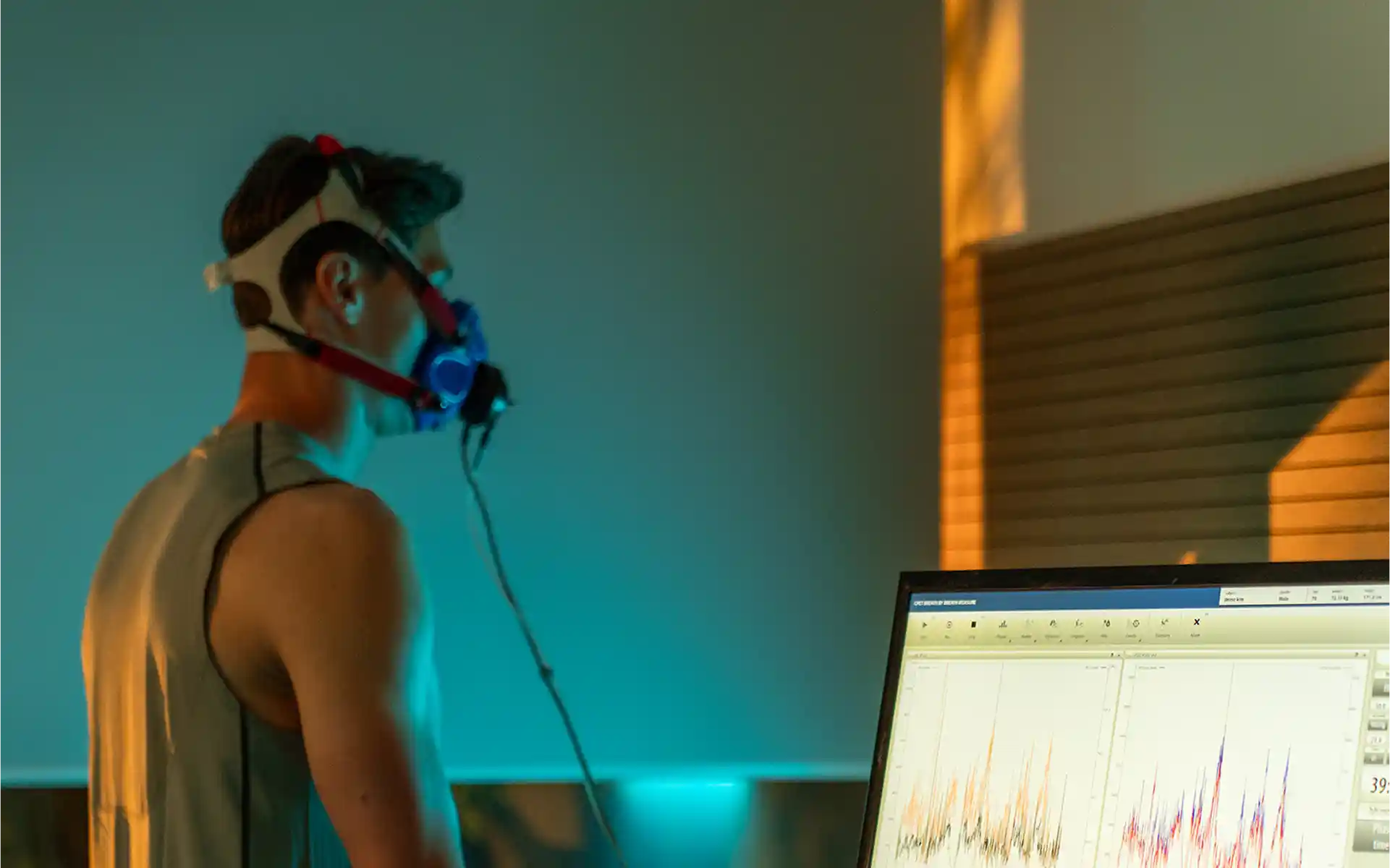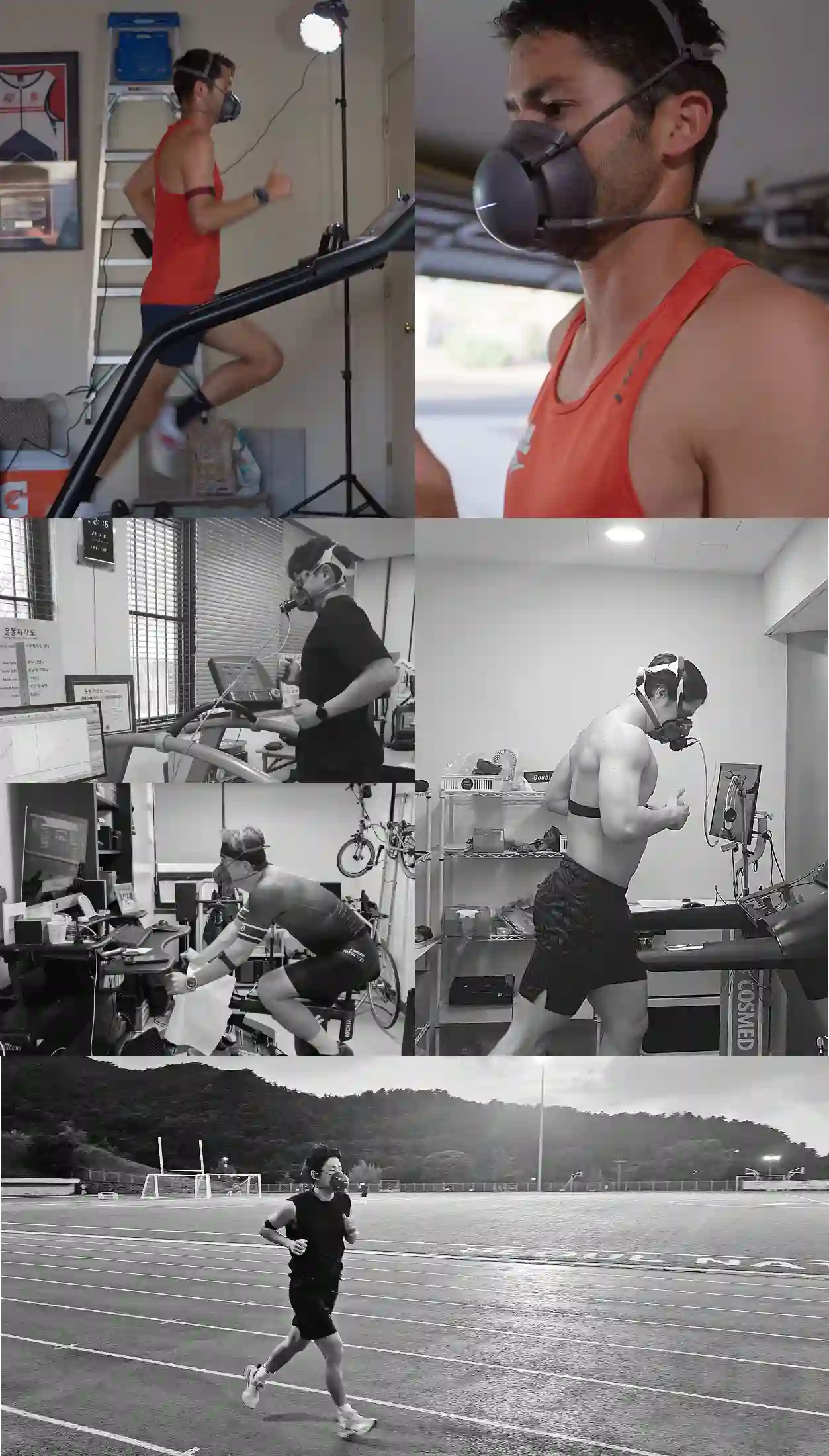
[Research] How Accurate is PACER? - Validation Against Lab Equipment
Why PACER is the Only Viable Personal CPET
Recently, CPET (Cardio-Pulmonary Exercise Testing) has become a crucial fitness metric not only for elite athletes and clinical evaluations but also for all aerobic exercisers, including runners and cyclists. To meet this growing demand, Neumafit launched the interdisciplinary PACER project, bringing together exercise physiologists, AI developers, biomedical engineers, fluid and aerodynamics experts, former national team coaches, and wearable ergonomics researchers. Their goal was to engineer a wearable CPET device with lab-level accuracy using proprietary AI-driven respiratory algorithms, high-precision sensor design, real-time flow calculation, and a field-ready mask structure. To objectively prove its accuracy, we conducted a two-phase experiment. The first phase tested the precision of PACER's analysis algorithm in a lab environment, while the second phase compared PACER's measurements against the COSMED K5 in real-world exercise settings.
Phase 1 - Validating the PACER Algorithm
The first step in proving PACER’s accuracy was to rigorously validate its algorithm’s computational capability. To achieve this, we collaborated with a running science research lab to design a multilayered, repetitive comparison test using the COSMED Quark CPET system as a lab-standard reference. We collected key respiratory metrics such as VE, VT, and BF from participants, fed the raw data into PACER’s internal algorithm, and calculated VO₂ and VCO₂ values. These outputs were then compared in detail with the values measured by the Quark system. Crucially, PACER does not use a gas sensor. Instead, it calculates oxygen consumption and carbon dioxide output using over 20 biosignals, including breathing rhythm, pattern, frequency, depth, heart rate, heart rate variability, and physical activity, analyzed through deep learning. Where traditional CPET devices measure values directly with gas analyzers, PACER derives them from signal patterns alone. The results exceeded expectations.


PACER’s calculated VO₂ and VCO₂ values matched Quark's measured values with an average agreement rate of over 96.7%, and trends at peak and transition phases aligned by approximately 98.3%. This demonstrates that PACER’s core algorithm delivers reliable computation on par with high-precision lab devices. It also proves that PACER is an intelligent system capable of accurate metabolic analysis without unstable gas sensors. Key advantages of eliminating gas sensors include:
- No sensor warm-up required
- No calibration process needed
- Reduced sensor replacement costs
- Consistent results even after long-term use
Phase 2 - Real-World Validation of PACER
After verifying algorithm accuracy in Phase 1, we designed a second experiment to validate PACER’s performance as a complete system in real-world usage. This phase tested whether PACER could maintain accuracy and system stability across multiple age groups, varying temperature and humidity levels, and under high-intensity exercise. Thirty participants were tested while wearing both PACER and the COSMED Quark CPET device during treadmill running and cycling. The experiments were divided into two sets:
- Set 1: PACER (indoors) vs. Quark (indoors)
- Set 2: PACER (outdoors) vs. Quark (indoors)
All tests were conducted under precisely synchronized conditions (second-level synchronization), and measurement items included core CPET metrics such as VO₂, VCO₂, RER, Fatmax, and LT1/LT2. The results showed that PACER achieved an average accuracy of 97.5% in indoor tests and maintained over 96% precision outdoors despite minor environmental noise. Notably, the VO₂ and RER trend curves were nearly identical to those of the Quark system. Fatmax and lactate thresholds paces were detected within a margin of error of ±0.4 km/h, having no meaningful impact on training guidance. These outcomes prove that PACER is the first wearable CPET device to secure quantitative reliability without gas sensors. Moreover, it maintains stable performance even outside of laboratory environments, making it a truly trustworthy device for real-world users.

Summary and Outlook
The second phase confirmed that PACER maintains accuracy and system robustness even under varied temperature, humidity, and exercise intensity levels across different age groups. Its performance as a wearable device with lab-grade accuracy goes beyond technical achievement—it lays the foundation for the democratization of CPET. PACER provides reliable performance feedback accessible to everyone, not just elite athletes. Moving forward, we will continue to refine our algorithms and conduct further real-world testing to evolve PACER into an even more precise and practical metabolic analysis tool.